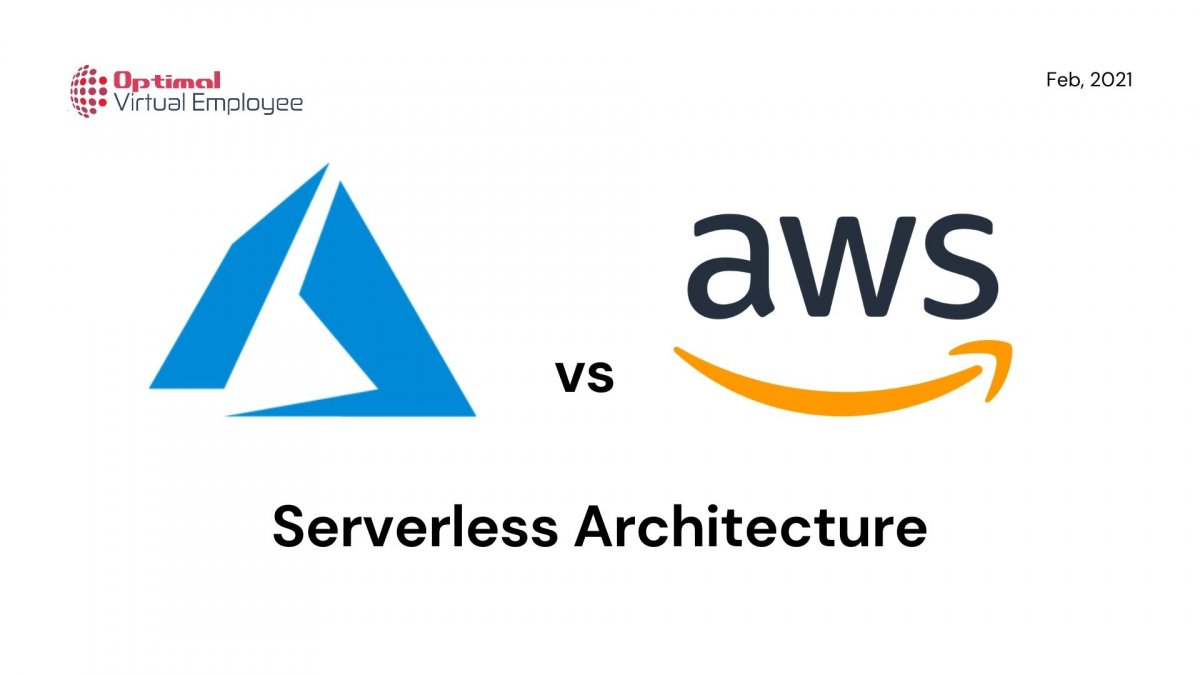Most businesses aim to optimize the return from their investment on IT infrastructure sooner than later. Cloud based services offer the perfect option for enterprises hoping to optimize their IT investments. By definition, serverless computing entails a mechanism where vendors offer backend services on the pay-per-use model instead of prepaid bandwidth.
Today, Function-as-a-Service (FaaS) providers like AWS Lambda and Azure functions are serverless and use cloud networks to offer conveniences to businesses.
Their serverless nature makes them cost efficient by removing overheads and improves efficiency. Businesses save money by paying for only what they use. Also, it allows businesses to skip the option of hiring skilled DevOps engineers to manage their cloud infrastructure. Software developers must understand that these serverless architectures allow build up of event-driven workflows.
Use Cases
Serverless computing is a suitable option for one-off, stateless, asynchronous, highly-dynamic, and concurrent workloads with unpredictable demand and unprecedented resource usage. FaaS is the best option in the following cases:
-
Business Logic
For applications that use multiple cloud services and functionalities that are available on request through APIs and webhooks etc, it is beneficial for running microservice based apps.
-
CI/CD Pipeline
The process of software development and delivery requires an environment as and when needed. This can save the amount of money required in the software development pipeline as a server never runs idle.
-
Data Processing
The use of FaaS during the complex working of the corporate ecosystem entails numerous message queues to streamline the data processing at large scale.
-
Scheduled Tasks
For scheduled jobs and tasks there need to be organised batches during serverless computing. The use of invoke infrastructure makes parallel computation possible along with network access, IO. Software developers can execute scheduled tasks and conserver resources that are not in use.
-
HTTP REST APIs
Web apps need to execute occasional requests like user registration and authentication.
-
Chatbots
Chatbots should be forever functioning and be able to cater to fluctuating demands, making FaaS an obvious choice.
-
Mobile Backend
There is no need to use a mobile app backend consistently when there is an option to act on the business logic as and when used by the user. Software developers should transfer the workloads on REST APIs and invoke them as and when needed without using them 24x 7.
-
IoT Sensor Input Management
If an IoT Sensor signals disruption, the infrastructure needed to handle responses gets invoked. The infrastructure can be scaled to size and then can be shut down as need be.
-
Multimedia Processing
There are some functions required to transform multimedia objects in the required formats when the file upload begins.
-
Database Changes
Software developers that audit the changes made to the database can ensure that they maintain quality standards.
-
AWS Lambda
AWS Lambda is evolving into a shell scripting language for the whole of AWS infrastructure. Lambda helps software developers create unlimited scenarios in response to various types of events.
These events can happen any place in the AWS infrastructure and they can even be triggered externally. Events invoke Lambda functions that in turn invoke anotherd function and make a complex workflow. AWS
Lambda supports functions in Node.JS, Java, Python, Go and C#. The following programming languages can easily embed code in other languages.
AWS Lambda offers a clean web interface for software developers to configure pipelines. Legacy software development involves writing configurations in text files, AWS Lambda involves clicking several web forms to bring forth the power of the Amazon cloud with basic coding. Software developers must configure the API gateway and open specific firewall ports to see how functions work.
Microsoft Azure
Microsoft Azure is a state of the art FaaS offering with widespread application in office products. One of its biggest applications is working with Office products.
Azure Logic Apps helps software developers create workflows using built-in connectors or third-party apps. Software developers can think beyond the semantics and syntax of the code. Microsoft Azure helps software developers link stateful code with stateless functions. The app follows the push and pull methods to exchange data between Salesforce, Office 365, Twitter, and other tools.
IT software developers can use Microsoft Azure to curate workflows from Powershell scripts. Moreover, Durable Functions allow creation and management of stateful functions which enhances the range of capabilities for building your event pipelines and workflows. CosmosDB is a SQL/NoSQL database which replicates what Cassandra and MongoDB APIs do.
It serves as a central nexus and consistently builds indexes to keep running things smoothly. Microsoft Azure helps with consolidation of existing databases and keep it open for experimentation.
In the End
Unlike popular belief, serverless computing is not fit for all kinds of software development. AWS Lambda is known for being polished architecture, it can be used to support scenarios as it is reliable enough.
However, software developers that create complex scenarios sometimes require additional configuration. Azure on the other hand has the lowest number of runtimes and offers a speedy serverless environment.
Also read:
Running a Software Development Company? 5 Things to Know without an Exception









